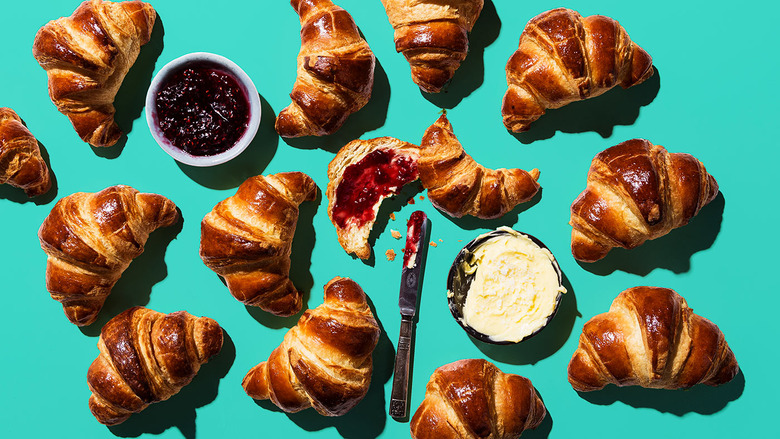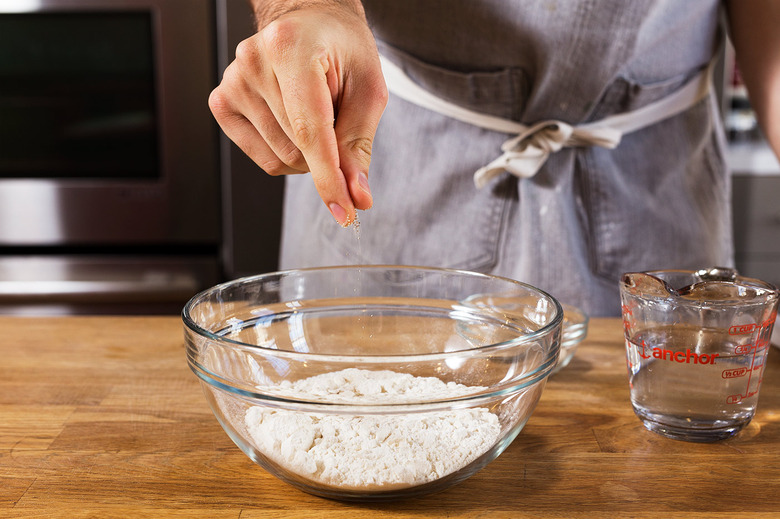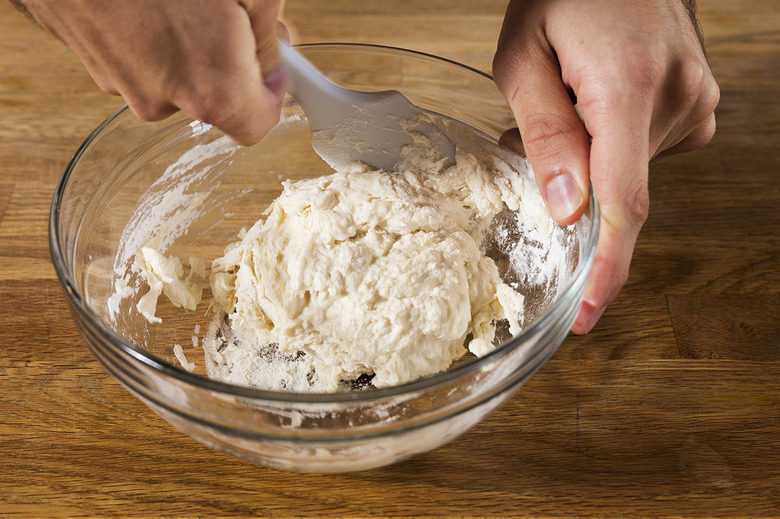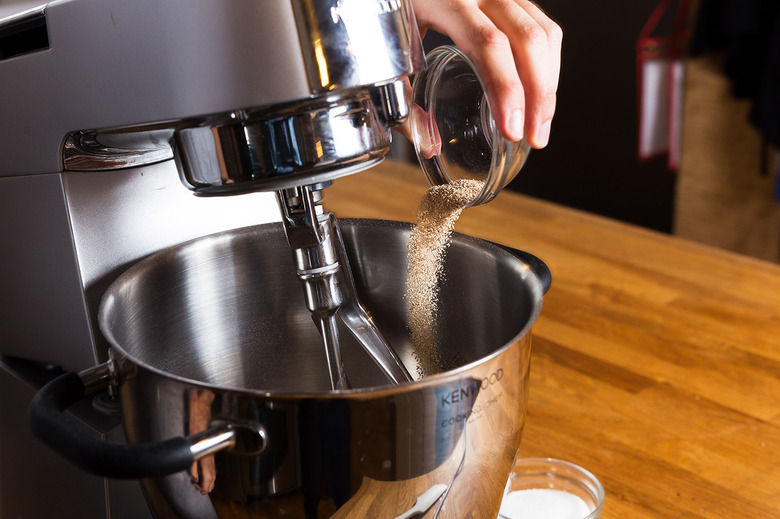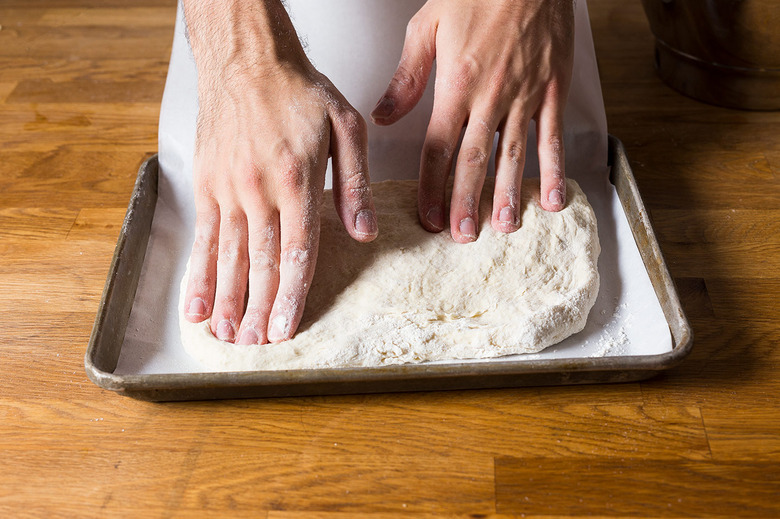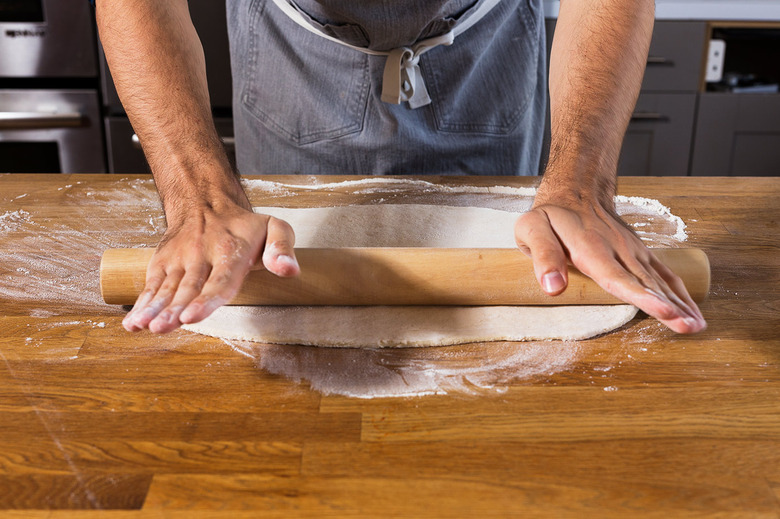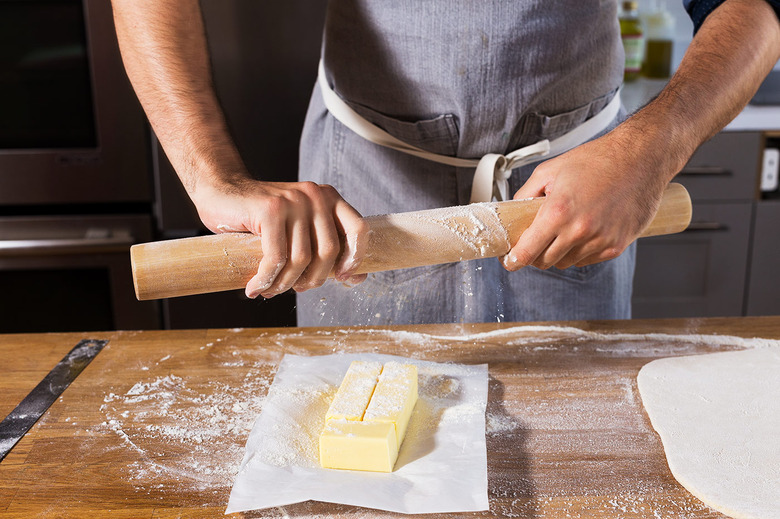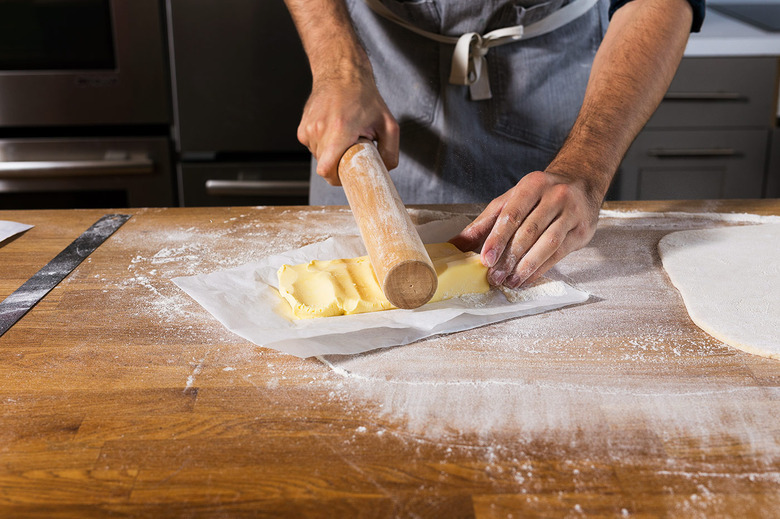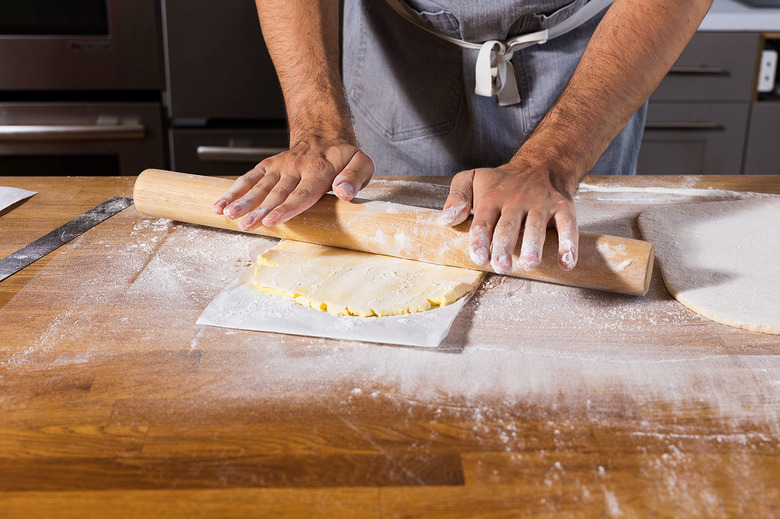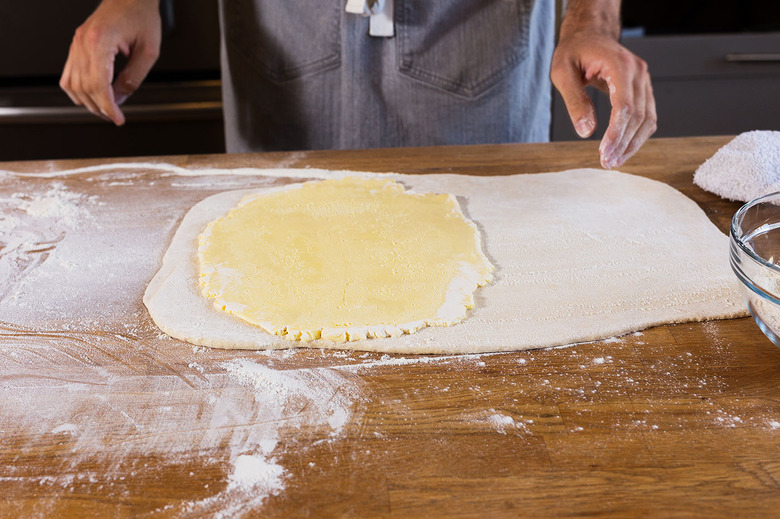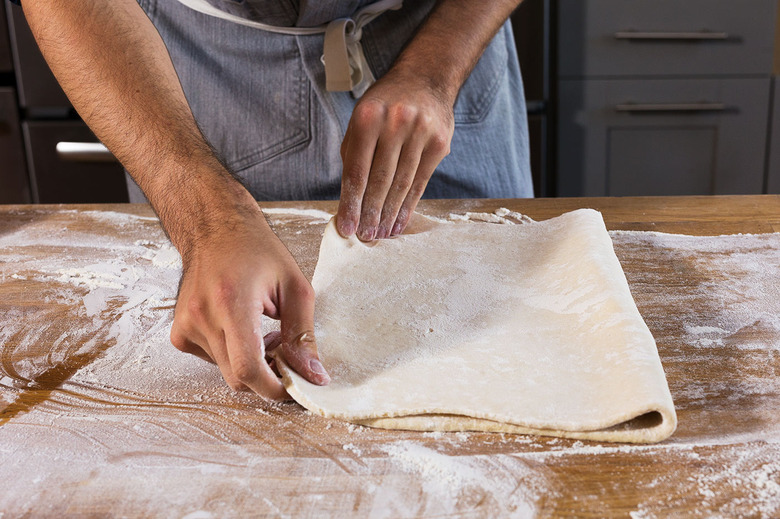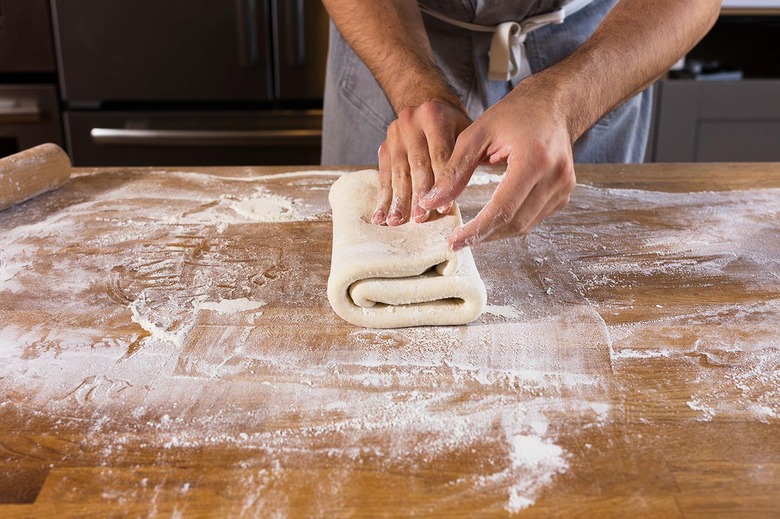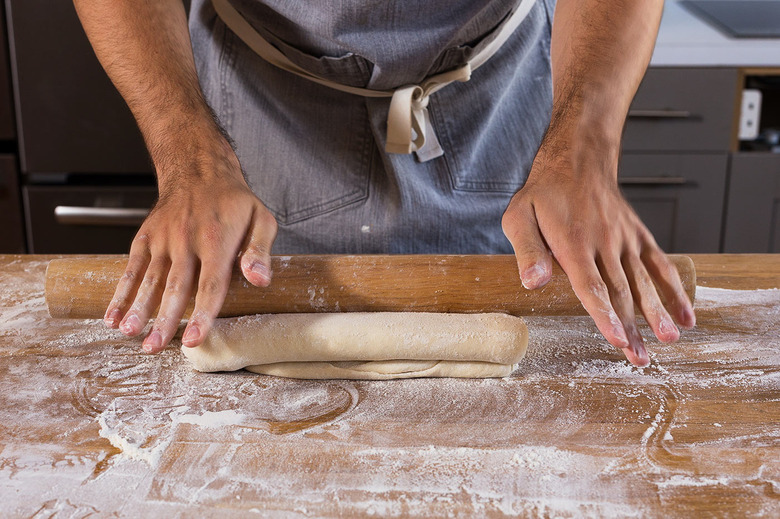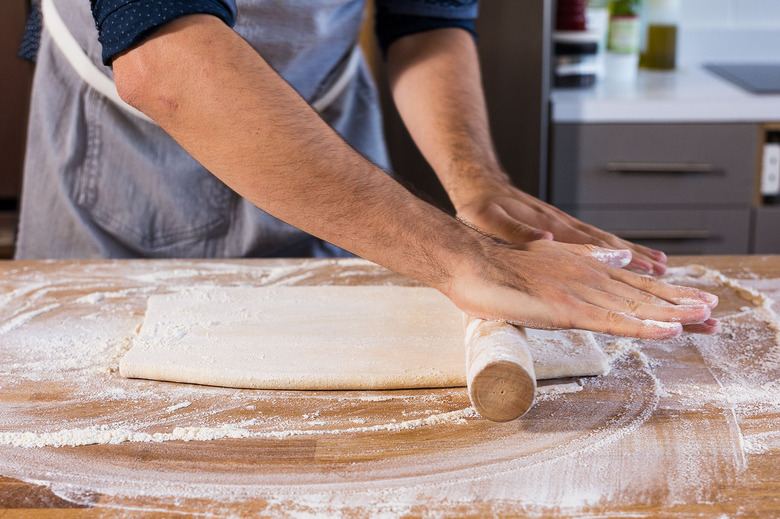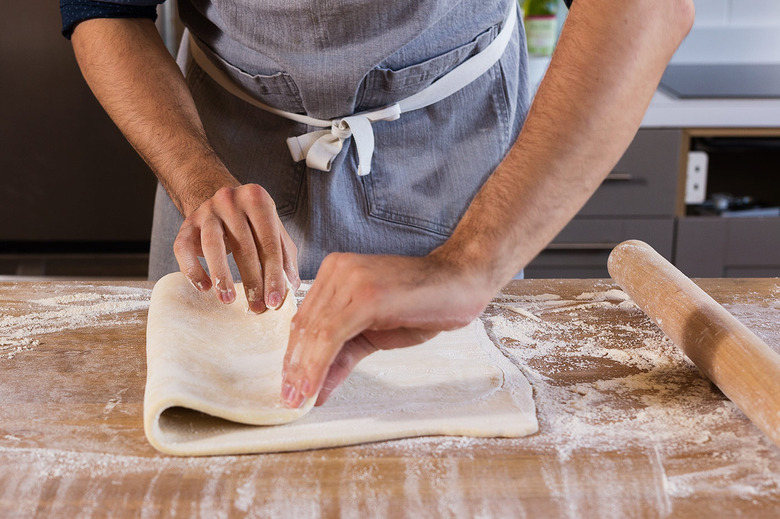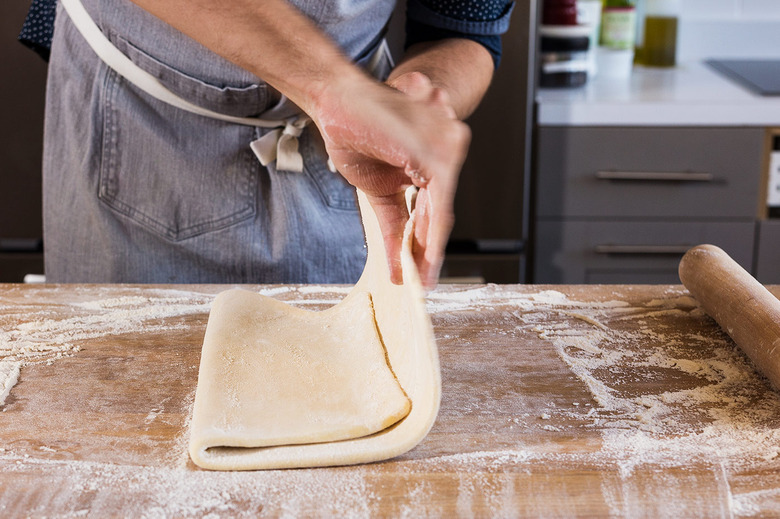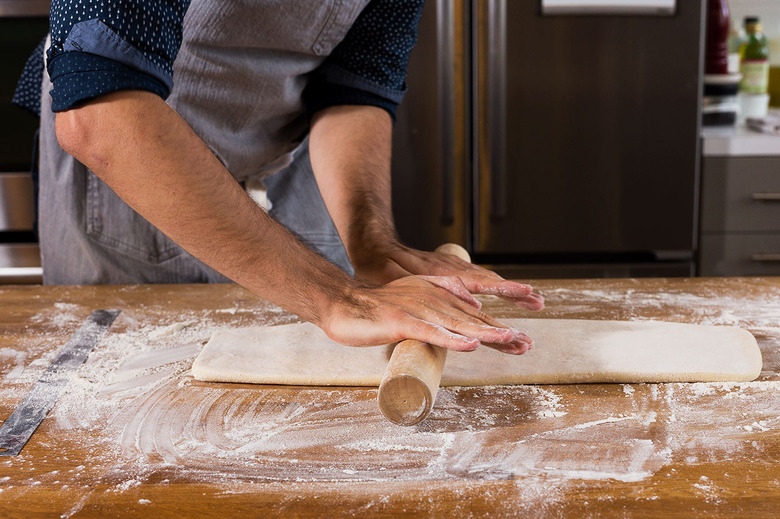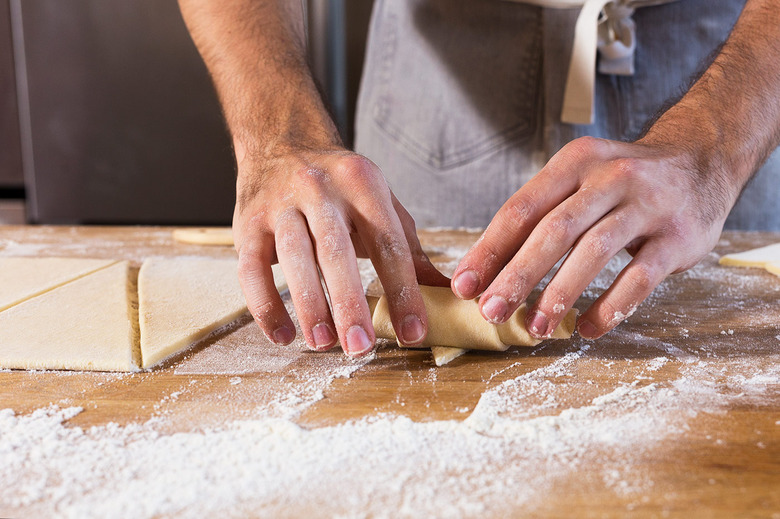How To Make The Perfect Croissants
Master the dish that's the epitome of classic baking
We can't think of anything better than waking up to a freshly baked batch of classic croissants, so instead of sitting around stuffing your face with Christmas cookies this holiday season, bust out your rolling pin and learn to master this buttery, flaky treat.
To describe the process simply: A sheet of butter is wrapped in a yeast dough then folded and layered before being rolled out and turned into the flaky crescent-shaped pastries you know and love (see the recipe). Easy, right? Well, it's a tad more complicated than that, but we promise you can perfect your croissant-making skills with our step-by-step guide, laced with plenty of tips to help you succeed. So let's get started.
RELATED Bow Down to the Flaky, Buttery Kouign-Amann "
Prefermential Treatment
Croissant dough requires a preferment, meaning an already-fermented dough, to get started. "I use a piece of old croissant dough," Zachary Golper, owner of Bien Cuit, tells us. "We call it pâte fermentée. The starter inoculates the new dough with enzymes and results in a croissant that has a "deep and balanced flavor, haunting aroma and maximum digestibility."
We're going to assume you don't have old croissant dough lying around, so we'll show you how to make an initial mixture with water, flour and yeast that works just as well.
Butter Days Ahead
You can't think about croissants without thinking about butter, the ingredient that's key to perfect flaky texture. Since it's such an integral part of the recipe, don't skimp on quality. Golper recommends a butter with an 82 percent or higher butterfat.
Once it's time to get your hands dirty, the strangest step of the recipe might be beating the butter with your rolling pin. This is also crucial to making restaurant-quality croissants. "If you laminate the dough with butter softened by leaving it out at room temperature, the butterfat will seize up once enrobed into the cold dough and result in broken laminations," Golper explains. "A high-fat butter tempered by kinetic energy (re: beating it with a rolling pin) will allow for clean laminations."
The Fold and the Beautiful
All those beautiful layers that hide inside a croissant? That's the result of numerous rounds of rolling and folding your dough. When the croissants bake, the butter melts and creates steam, which separates the dough into those endless flaky layers.
Unlike a laminated dough like puff pastry, croissant dough is yeasted, which requires time to proof. "Fortunately for the gastronome, cold weather is very good for yeasted foods, as it slows down fermentation. That added time makes for deeper flavor and aroma," Golper explains.
As for the usual breakfast accessories, Golper is a believer in skipping the jam or butter when it comes to these pastries. "I like to taste the individual history and ingredients of each croissant," he adds. "To me, a croissant is a complete food and stands humbly alone as both a bread and a pastry, and among the most difficult of both to make well."
To make your preferment, mix 1 cup of the flour with a pinch of the yeast and ⅔ cup of water.
Stir until a smooth sponge forms, then let sit in a warm place for 5 hours.
Add the preferment and the remaining dough ingredients to the bowl of a stand mixer and mix until a smooth dough forms.
Shape into a rectangle on a parchment-line sheet pan and let proof in the refrigerator overnight.
Roll the dough into a 14-by-20-inch rectangle.
Using a floured rolling pin, make the insert by beating the butter over a sheet of parchment.
Begin to beat the butter, forming 1 whole sheet.
Once beaten, and using flour as needed, roll the butter into a 9-by-13-inch rectangle.
Place the butter insert on the right side of the dough.
Fold the dough over the butter, sealing the edges.
Fold the butter-encased dough like a letter, then chill for 30 minutes.
Roll the chilled dough into a 14-by-16 inch rectangle.
Make sure the rectangle is laid out horizontally before folding.
Complete a trifold, folding the left and right ends in like a letter.
After completing the trifold, chill the dough before repeating this process 2 more times, rotating 90 degrees each time.
Roll the laminated dough into a 9-by-40-inch horizontal rectangle (this will take about 10 minutes).
Using a sharp knife, cut 5-inch notches into the top edge of the rectangle. Begin to cut triangles, cutting to the centerpoint of each notch. You should end up with 14 triangles.
Using a pastry brush, brush off any excess flour.
Working from the wide end of each triangle, roll the dough into a croissant shape, tucking the end of the dough underneath.
Lightly brush the croissants with some of the beaten egg, then place them somewhere warm to proof for 2 hours, until the croissants have risen and you can see the layers of butter. After another layer of egg wash, you are ready to bake.
